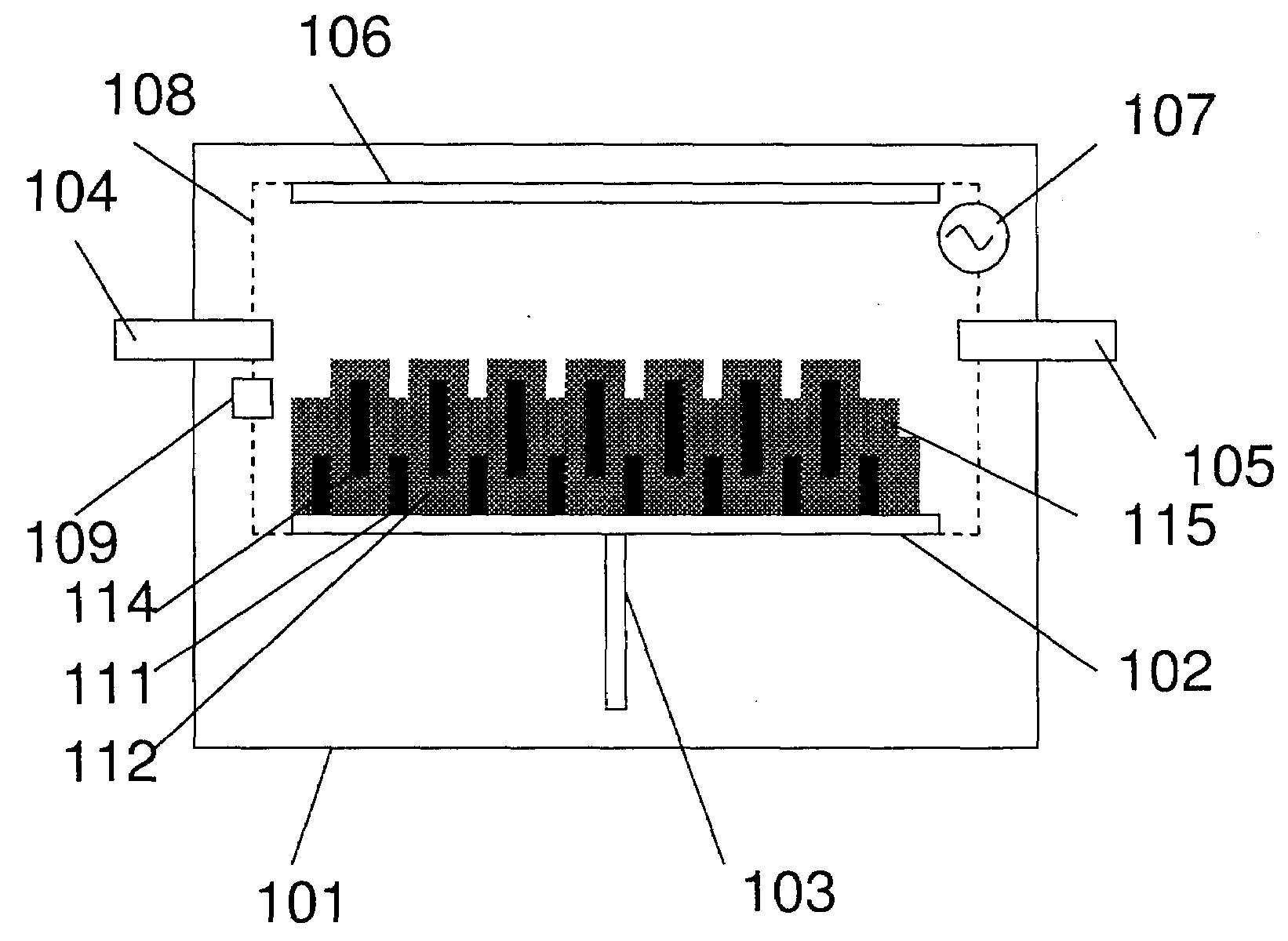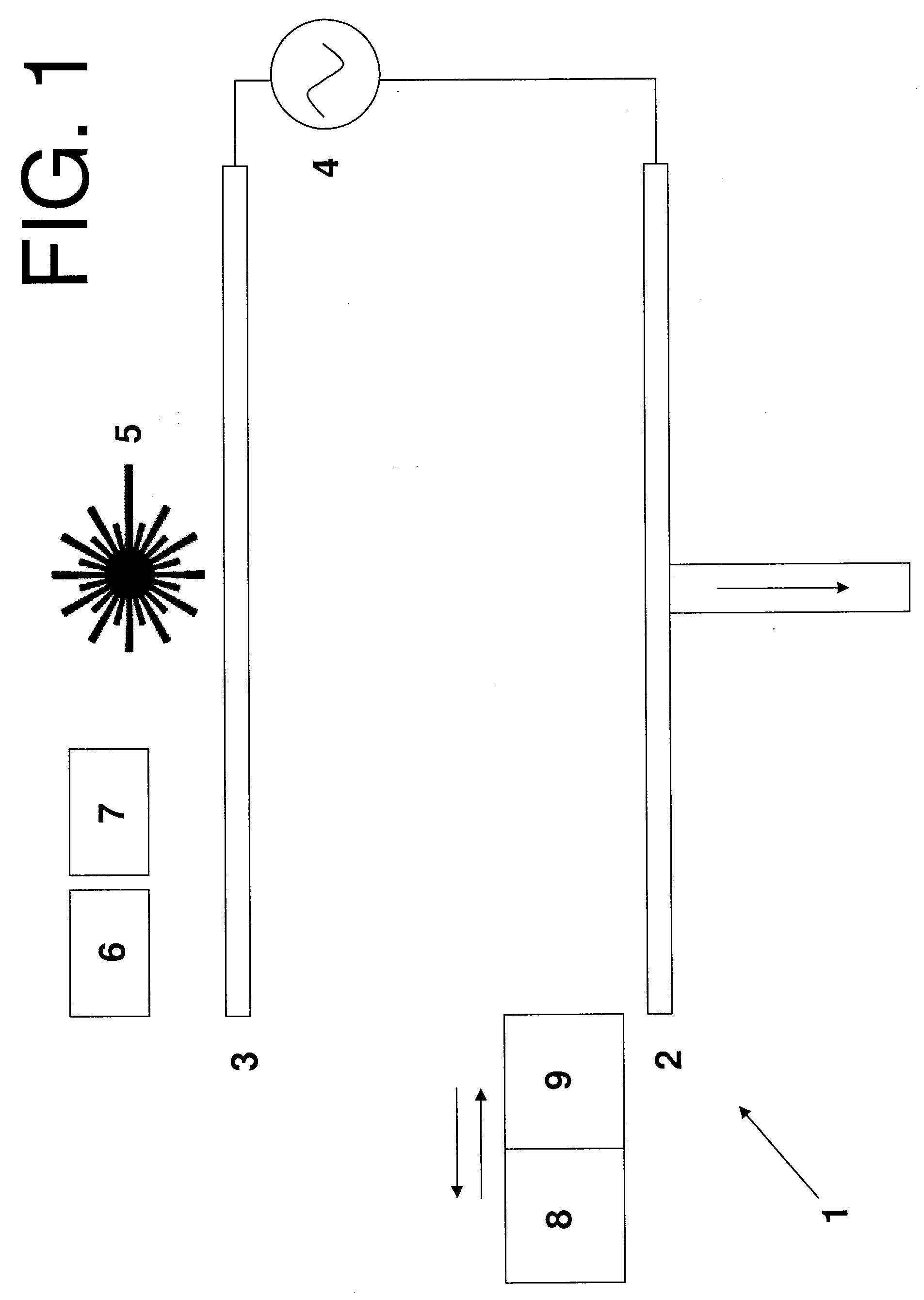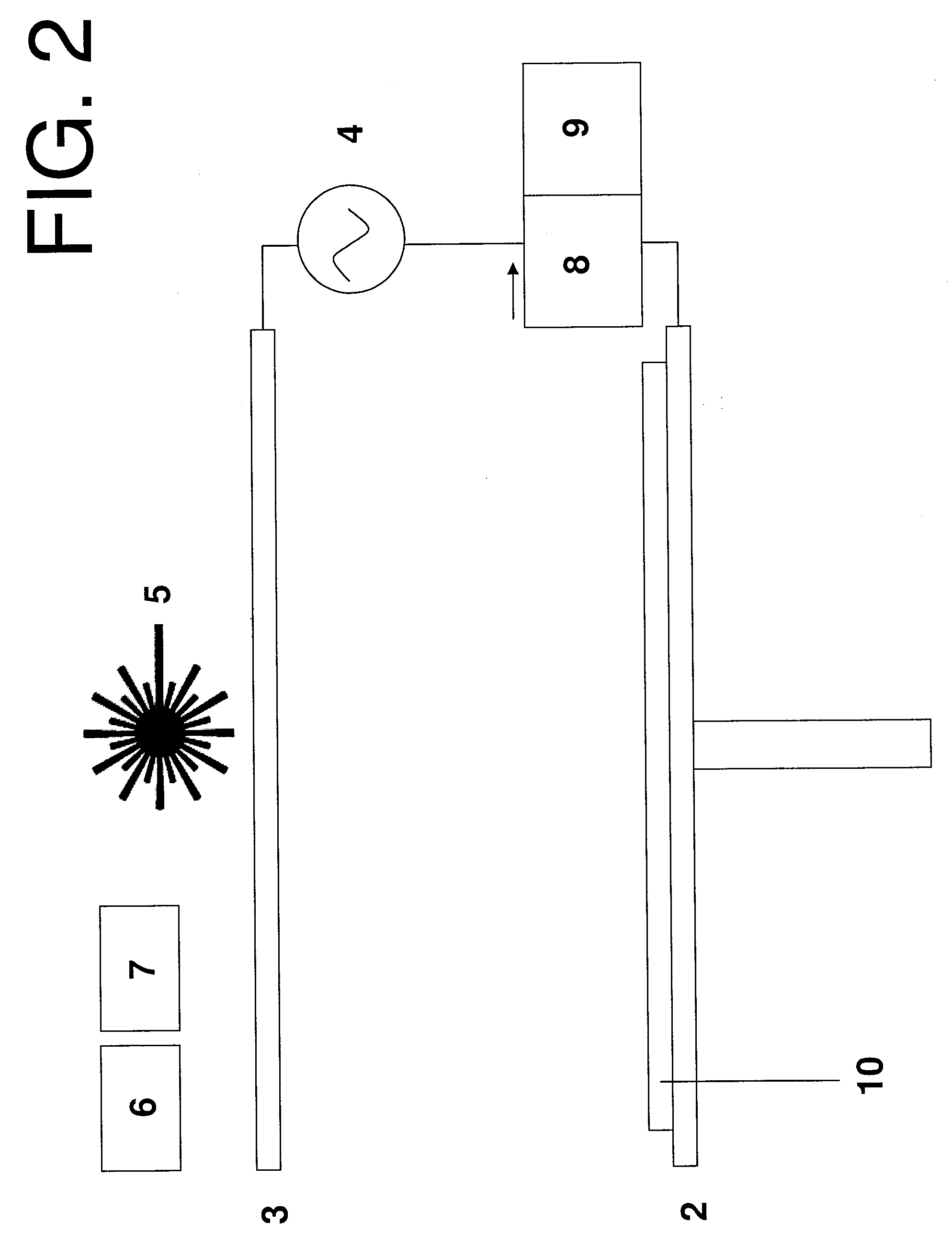Method of manufacturing composite material
- Summary
- Abstract
- Description
- Claims
- Application Information
AI Technical Summary
Benefits of technology
Problems solved by technology
Method used
Image
Examples
Embodiment Construction
)
[0037]The apparatus 1 shown in FIG. 1 is housed within a process chamber (not shown). A negative plasma source electrode 2 and a positive plasma source electrode 3 are connected by a power source 4. A laser 5 is positioned above the positive plasma source 3, and is associated with a raster scanning mechanism (not shown). A gas supply 6 can be turned on and off to supply a pre-heated process gas to the chamber, such as CH4 / H2. A second gas supply 7 can be turned on and off to supply an inert gas such as N2 to the process chamber. The inert gas is preheated to a temperature at or just below the melting point of the matrix material. The electrode 2 is also heated by a heating element (not shown) to a similar temperature.
[0038]A heated hopper 8 and a cooled ink-jet printing head 9 are mounted on a transport mechanism (not shown) which can move the hopper 8 and printing head 9 from left to right in FIG. 1 (that is, from one end of the negative plasma source 2 to the other). A transport ...
PUM
| Property | Measurement | Unit |
|---|---|---|
| Percent by mass | aaaaa | aaaaa |
| Weight | aaaaa | aaaaa |
| Thickness | aaaaa | aaaaa |
Abstract
Description
Claims
Application Information
 Login to View More
Login to View More - R&D
- Intellectual Property
- Life Sciences
- Materials
- Tech Scout
- Unparalleled Data Quality
- Higher Quality Content
- 60% Fewer Hallucinations
Browse by: Latest US Patents, China's latest patents, Technical Efficacy Thesaurus, Application Domain, Technology Topic, Popular Technical Reports.
© 2025 PatSnap. All rights reserved.Legal|Privacy policy|Modern Slavery Act Transparency Statement|Sitemap|About US| Contact US: help@patsnap.com



